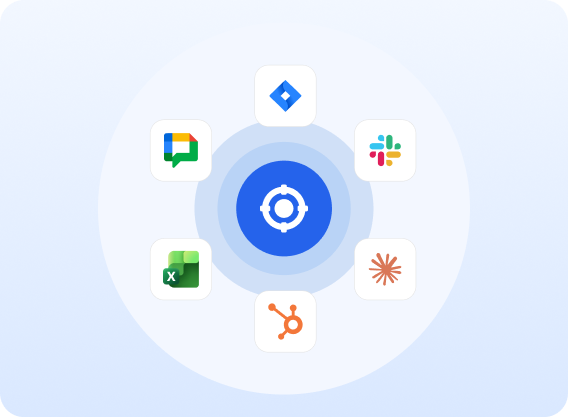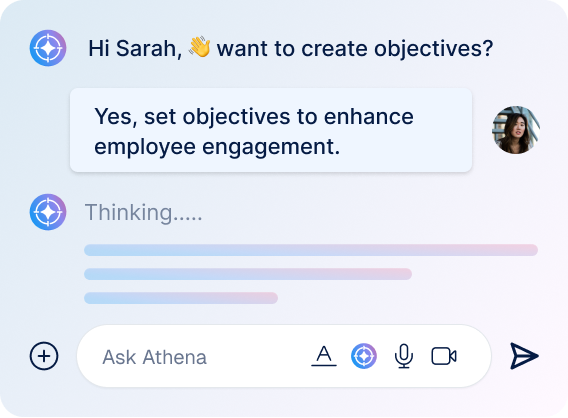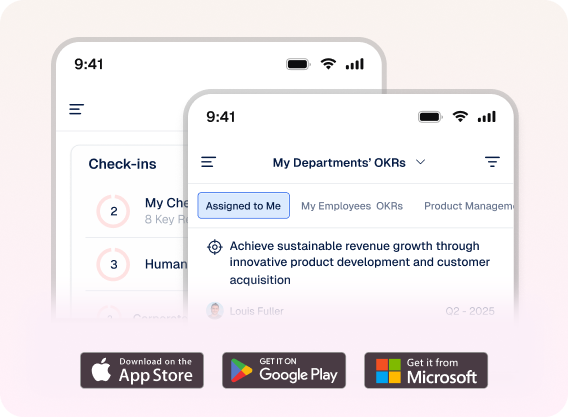
“A tool like Profit.co, equipped with ready-to-use templates and resources, was invaluable.”
LightEdge Solution’s Transformative Journey of Expansion and Integration with Profit.co’s OKR Framework
In this case study, we spotlight LightEdge Solutions, a tech trailblazer with over 25 years of experience. Anchoring its reputation in enterprise-grade data center solutions, LightEdge has evolved from colocation to private cloud hosting services. Their vision is not restricted to technology; it’s anchored in ensuring secure, compliant, and resilient business outcomes for their clients. Originating from Des Moines, Iowa, LightEdge’s footprint, once primarily Midwestern, has expanded to include locations from Austin, Texas, to Raleigh, North Carolina, and even as far as San Diego and Phoenix.
Mr. James Stecker offers insights into LightEdge’s groundbreaking strategies. He embarked on his journey in operations and then transitioned to spearheading integration projects amidst a wave of company acquisitions. With a rich engineering and project management background and having played pivotal roles in the company’s OKR program and integration projects, James exemplifies the excellence for which LightEdge is renowned. Join us as we explore LightEdge’s transformative journey with Profit.co’s OKRs.
Why did LightEdge decide to implement the OKR methodology?
James replied, “As LightEdge expanded into new markets, our leadership recognized a need to sharpen our focus on key priorities. We’ve been adept at identifying a problem, no matter how minute, and promptly addressing it. But as our growth continued, it became imperative to improve visibility across departments and ensure we’re all pulling in the same direction.” He added, “The challenge was not just about task alignment, but fostering a genuine team spirit. We sought a methodology to enhance transparency and promote collaborative efforts in our project approach. That’s what drew us to OKRs. ” He clarified that OKRs offered a way to maintain that visibility and ensure all departments were aligned in their goals.”
How has the journey been so far with the OKR implementation?
James responded, “Our journey with OKRs has been progressive. We’ve just wrapped up our third quarter since officially rolling out the OKR program, but it’s been almost a year since we initiated the process. Our foray into OKRs was largely influenced by many in our leadership and managerial teams reading the book ‘Measure What Matters.’ This enlightening guide introduced the OKR framework and showcased successful companies that thrived using it. We sought external coaching and leaned heavily on the foundational elements of Profit to facilitate a smoother transition. Given that many of us were navigating OKRs for the first time, having a tool like Profit.co, equipped with ready-to-use templates and resources, was invaluable.”
Did you face any implementation challenges during the OKR roll-out, especially considering its culture shift implications?
James answered, “One of the most prominent challenges during the initial phase of OKR implementation was securing buy-in from all major players. While we had the unwavering support of our C-suite from the outset, ensuring consistent use of, and belief in, the tool required some cultivation. It wasn’t just about having a tool but getting everyone to regularly commit to their weekly, monthly, and quarterly check-ins on their OKRs.”
He quickly added, “The tool from Profit.co simplified the initial phases for us, serving as a ready-to-use solution that provided immediate visibility into our successes. When you anchor OKRs to the company’s most critical objectives, it’s hard for anyone to overlook or dismiss their importance. While adapting to this new methodology presented cultural challenges, our commitment and belief in the process have only deepened over time, with a notable increase in overall adoption.”
Who provided the executive sponsorship for implementing OKRs at LightEdge?
James responded, “The pivotal figures in the early stages of our OKR implementation were Jeff Springborn, our Chief Operating Officer, and Jim Masterson, our President and CEO. Jeff, in particular, was instrumental. His enthusiastic adoption of the program led him to designate me as the ‘OKR Shepherd.’ As the program manager, I drew insights from OKR coaching and oversaw the entire implementation. Despite his numerous commitments, Jeff’s deep involvement was fundamental to our success.” James added, “With his profound business insight, he meticulously reviewed the OKRs, ensuring alignment with our company’s vision and offering valuable feedback.” His hands-on approach, especially from someone in his position, played a significant role in the success of our OKR rollout. Thanks to the solid foundation laid by our leadership team, the program now operates smoothly, setting clear quarterly expectations for our managers.”
Did you consider using a tool for implementing OKRs at LightEdge?
James mentioned, “While we were keen on adopting the OKR methodology, we realized the manual aspects were cumbersome. This realization led us to explore tools to streamline the process. While we deep-dived into understanding OKRs, we simultaneously looked into how to practically execute them. The tool was always a part of our plan, and I’m grateful we launched it concurrently. Doing everything manually, especially in spreadsheets, would have made this initiative more challenging.”
How did you choose Profit.co for implementing OKRs?
When asked how he selected Profit.co for implementing OKRs, James shared, ” We didn’t initially have any leading solutions at our fingertips. While we did look into Microsoft Viva, it was Profit.co that caught our attention during a simple Google search, mainly due to its numerous positive reviews and success stories.” He added, “After evaluating Profit.co and other platforms, the decision became straightforward. Several features, notably the ‘automatic generation of reports and dashboards,’ assured me of its value to our users and those overseeing the program.”
How was your onboarding or implementing experience with Profit.co?
James recalled, “We collaborated with a third-party OKR coach and invested significant time in understanding the nuances of objectives and crafting effective key results. Our main emphasis early on was on education. We aimed to ensure our leadership team was well-versed and comfortable with the OKR process. My role became a ‘super user’ of the Profit.co tool after that. Since we initially didn’t have a designated OKR expert, many of us were ‘learning on the fly.’ The simplicity of Profit.co as a tool was a huge advantage. It provided a solid foundation that we could depend on during our learning journey.”
How have you realized the benefits of OKRs, both qualitatively and quantitatively?
James reflected, “One significant achievement is how OKRs have enabled us to establish benchmarks, especially given that we’re a strong engineering team. OKRs have dramatically improved our visibility across various business metrics beyond sales and revenue. James noted, “Over the years, LightEdge has acquired several companies, each bringing its unique culture and processes. We’ve been able to integrate these various subcultures thanks to OKRs. The transparency provided by OKRs has effectively bridged these differences, enabling everyone to understand their contributions and the bigger picture.” He added, “This newfound clarity has empowered our employees, managers, and leaders to be more proactive and streamlined our focus on a day-to-day and quarter-to-quarter basis.”
What are your future plans with OKRs? How do you plan to scale up?”
James shared, “We’ve already expanded OKRs to our leadership, and now every department has its own OKR representative. This ensures that everyone is aligned with our common objectives each quarter. Beyond top leadership, we’re also starting to cascade OKRs deeper into our sub-departments. The aim is to empower individuals to manage their OKRs, both personal and professional, across various levels beneath our top leadership. As we think about scaling up, especially when considering a potential jump from 20-25 users to 150, we recognize the need for another ‘super user’ to help with training and rollouts. We see the potential in broadening the use of OKRs throughout our entire organization, not just from a top-down perspective.”
What is your advice for organizations looking to implement OKRs?
James highlighted:- “It’s normal for the OKR process to be a bit messy initially. Don’t be disheartened if things aren’t perfect in the first or second quarter. It takes time for everyone to adjust, understand, and fully buy into the process.”
- “It’s crucial to put in the legwork upfront. Ensure everyone understands what objectives and key results truly signify. Merely throwing ideas together won’t cut it. Instead, take the time to learn how to set meaningful OKRs that can genuinely drive value, even if it means making a few mistakes along the way.”
- “Having leadership on board is very important. They set the tone and standards, and their involvement ensures a smoother transition and greater overall success with OKRs.”
What advice would you give individuals regarding their technology choices when implementing OKRs?
James suggested:- “Don’t hesitate to take advantage of trial periods. It’s essential to see firsthand if the tool aligns with your company’s operations and communication methods.”
- “Reporting capabilities are crucial. It’s not merely about implementing OKRs but also being able to retrieve and share that data efficiently.” On this, James highlighted why LightEdge chose Profit.co: “Profit.co stood out with its reporting features. Not only was implementation easy, but we could pull that information and share it with others at the click of a button. Additionally, the ability to interact with other platforms we use in-house was invaluable.”
- “Avoid making a choice solely based on the UI’s appearance. For us at LightEdge, the functionality of Profit and how it catered to our specific needs mattered most.”


